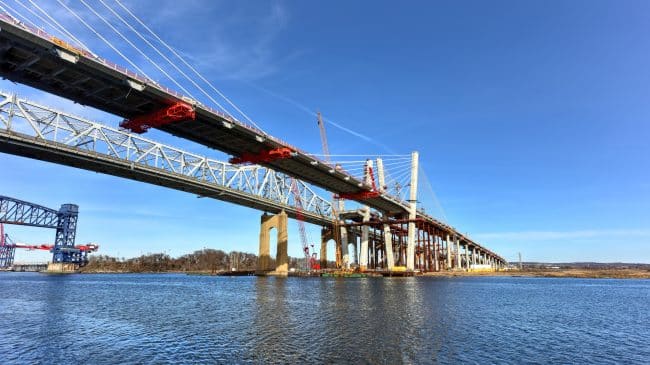President Trump’s infrastructure plan makes heavy use of public-private partnerships. However, many Democrats and some Republicans representing rural states or districts remain skeptical of public-private partnerships ability to improve infrastructure. Trump himself has reportedly wavered in his support for public-private partnerships (P3s) and his characteristic ambiguity in how he plans to actually find the $200 billion in federal funding called for in his plan has caused additional confusion. But during his State of the Union speech, Trump stated: “Every federal dollar should be leveraged by partnering with state and local governments and, where appropriate, tapping into private sector investment.”
As concerns are raised about the feasibility of financing Trump’s infrastructure plan, when is it appropriate to tap into private sector investments?
Public-private partnerships typically involve the private sector agreeing to shoulder the financial risk, and in some cases the temporary management, of various projects usually handled by the public sector. P3s are distinct from privatization. The public sector, or the government, does not relinquish its responsibility to provide these services.
For example, under a Design-Build-Finance-Operate-Maintain (DBFOM) concession—a popular type of P3—the public sector outsources the designing, building, financing, operation, and maintenance of the project to the private sector for a specified period of time. The private sector earns back its investment through the revenue from the project itself, like tolls or user fees, or through availability payments made by the public sector. In the former, the private sector keeps the project’s user fees, and in the latter, the public sector makes periodic payments to the private sector once the project becomes available to the public and meets certain performance and quality criteria. After the agreed upon time period is over, operating control goes back to the government.
In terms of infrastructure, P3s are commonly used for rail lines, toll roads and bridges. The government is typically responsible for providing for the maintenance of the country’s infrastructure, but the cost of such maintenance can often be unfeasible without increasing taxes or slashing funding elsewhere. In cases like these, P3s can be a useful option. Since toll roads and bridges have user fees (tolls) the private sector can make improvements to the road or bridge and earn back its investments through toll revenues.
In 2008, it became apparent that the South Norfolk Jordan Bridge in Virginia connecting Portsmouth to Chesapeake needed to be replaced. The Chesapeake City Council voted to permanently close the bridge because “the city cannot handle all of the transportation demands before us.” Unsolicited, a business consortium approached the Chesapeake City Council with a proposal to privately fund a new highway bridge over the Elizabeth River. The council unanimously approved. The city got a new $142 million bridge built entirely from private funds, and the business consortium is being paid back with toll revenue from the bridge. The consortium owns and operates the South Norfolk Jordan Bridge.
Another recent, successful P3 project is the new Goethals Bridge between New Jersey and Staten Island. In 2017, the old Goethals Bridge, just shy of its 90th birthday, finally closed. Then-New Jersey Gov. Chris Christie said in a statement, ”Drivers have been nervously gripping the steering wheel of their cars just to stay in the narrow lanes designed in the 1920s for the nation’s first generation of automobiles.” The Port Authority of New Jersey and New York, a bi-state agency, partnered with NYNJ Link, a joint venture team of contractors. The deal structure was Design-Build-Finance-Maintain (DBFM). NYNJ Link agreed to maintain the two-span bridge for the next 35 years. Both parties mutually financed the project. Gov. Christie said the partnership proved invaluable by allowing, “(S)wifter project completion than had we relied solely on the public sector.”
P3s allow for necessary infrastructure projects to be completed, without the public sector bearing all of the cost. As Christie noted, they encourage expediency, as the available capital and talent increase. Of course, not all projects are right for P3s, and it is important to properly vet the capabilities of the private sector before commissioning a project. P3s can be assets for the country’s infrastructure maintenance and repair, but they alone are not enough.
A press statement released by White House Deputy Press Secretary Lindsay Walters reads, “P3’s have been a part of the administration’s research… but they are certainly not the silver bullet for all of our nation’s infrastructure problems and we will continue to consider all viable options.”
P3s may not be a “silver bullet,” but they are an attractive option for the Trump administration, which is looking to generate large infrastructure investments without federal taxpayers footing the bill.
